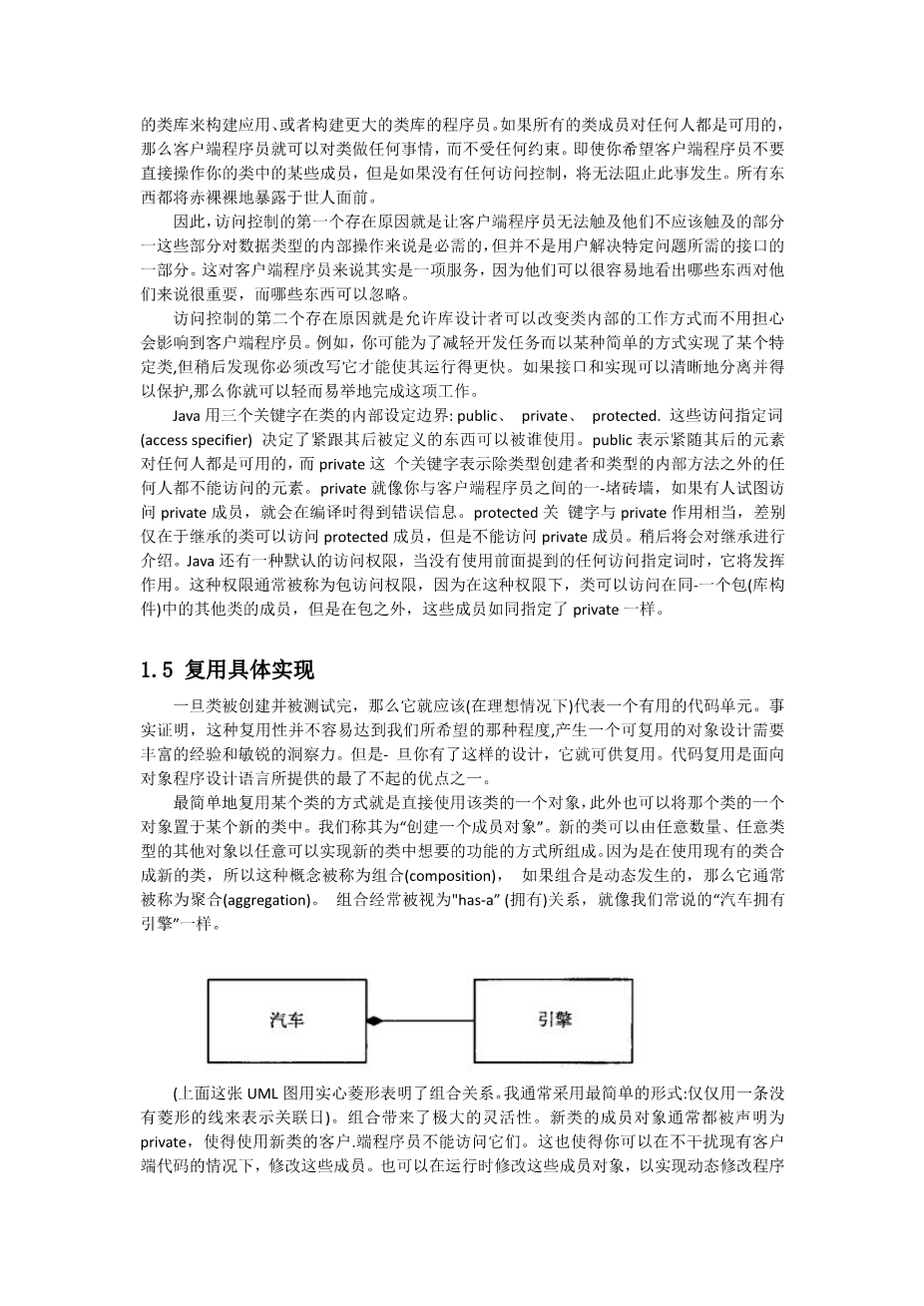An object provides services
While yoursquo;re trying to develop or understand a program design, one of the best ways to think about objects is as “service providers.” Your program itself will provide services to the user, and it will accomplish this by using the services offered by other objects. Your goal is toproduce (or even better, locate in existing code libraries) a set of objects that provide the ideal services to solve your problem. A way to start doing this is to ask, “If I could magically pull them out of a hat, what objects would solve my problem right away?” For example, suppose you are creating a bookkeeping program. You might imagine some objects that contain pre-defined bookkeeping input screens, another set of objects that perform bookkeeping calculations, and an object that handles printing of checks and invoices on all different kinds of printers. Maybe some of these objects already exist, and for the ones that donrsquo;t, what would they look like? What services would those objects provide, and what objects would they need to fulfill their obligations? If you keep doing this, you will eventually reach a point where you can say either, “That object seems simple enough to sit down and write” or “Irsquo;m sure that object must exist already.” This is a reasonable way to decompose a problem into a set of objects. Thinking of an object as a service provider has an additional benefit: It helps to improve the cohesiveness of the object.
High cohesion is a fundamental quality of software design: It means that the various aspects of a software component (such as an object, although this could also apply to a method or a library of objects) “fit together” well. One problem people have when designing objects is cramming too much functionality into one object. For example, in your check printing module, you may decide you need an object that knows all about formatting and printing. Yoursquo;ll probably discover that this is too much for one object, and that what you need is three or more objects.
One object might be a catalog of all the possible check layouts, which can be queried for information about how to print a check. One object or set of objects can be a generic printing interface that knows all about different kinds of printers (but nothing about bookkeeping—this one is a candidate for buying rather than writing yourself). And a third object could use the services of the other two to accomplish the task. Thus, each object has a cohesive set of services it offers. In a good object-oriented design, each object does one thing well, but doesnrsquo;t try to do too much. This not only allows the discovery of objects that might be purchased (the printer interface object), but it also produces new objects that might be reused somewhere else (the catalog of check layouts). Treating objects as service providers is a great simplifying tool. This is useful not only during the design process, but also when someone else is trying to understand your code or reuse an object. If they can see the value of the object based on what service it provides, it makes it much easier to fit it into the design.
The hidden implementation
It is helpful to break up the playing field into class creators (those who create new data types) and client programmers4 (the class consumers who use the data types in their applications). The goal of the client programmer is to collect a toolbox full of classes to use for rapid application development. The goal of the class creator is to build a class that exposes only whatrsquo;s necessary to the client programmer and keeps everything else hidden. Why? Because if itrsquo;s hidden, the client programmer canrsquo;t access it, which means that the class creator can change the hidden portion at will without worrying about the impact on anyone else.
The hidden portion usually represents the tender insides of an object that could easily be corrupted by a careless or uninformed client programmer, so hiding the implementation reduces program bugs. In any relationship itrsquo;s important to have boundaries that are respected by all parties involved. When you create a library, you establish a relationship with the client programmer, who is also a programmer, but one who is putting together an application by using your library, possibly to build a bigger library. If all the members of a class are available to everyone, then the client programmer can do anything with that class and therersquo;s no way to enforce rules. Even though you might really prefer that the client programmer not directly manipulate some of the members of your class, without access control therersquo;s no way to prevent it. Everythingrsquo;s naked to the world.
So the first reason for access control is to keep client programmersrsquo; hands off portions they shouldnrsquo;t touch—parts that are necessary for the internal operation of the data type but not part of the interface that users need in order to solve their particular problems. This is actually a service to client programmers because they can easily see whatrsquo;s important to them and what they can ignore. The second reason for access control is to allow the library designer to change the internal workings of the class without worrying about how it will affect the client programmer. For example, you might implement a particular class in a simple fashion to ease development, and then later discover that you need to rewrite it in order to make it run faster. If the interface and implementation are clearly separated and protected, you can accomplish this easily. Java uses three explicit keywords to set the boundaries in a class: public, private, and protected. These access specifiers determine who can use the definitions that follow.
public means the following element is available to everyone. The private keyword, on the other h
剩余内容已隐藏,支付完成后下载完整资料


英语译文共 10 页,剩余内容已隐藏,支付完成后下载完整资料
资料编号:[254389],资料为PDF文档或Word文档,PDF文档可免费转换为Word
以上是毕业论文外文翻译,课题毕业论文、任务书、文献综述、开题报告、程序设计、图纸设计等资料可联系客服协助查找。


